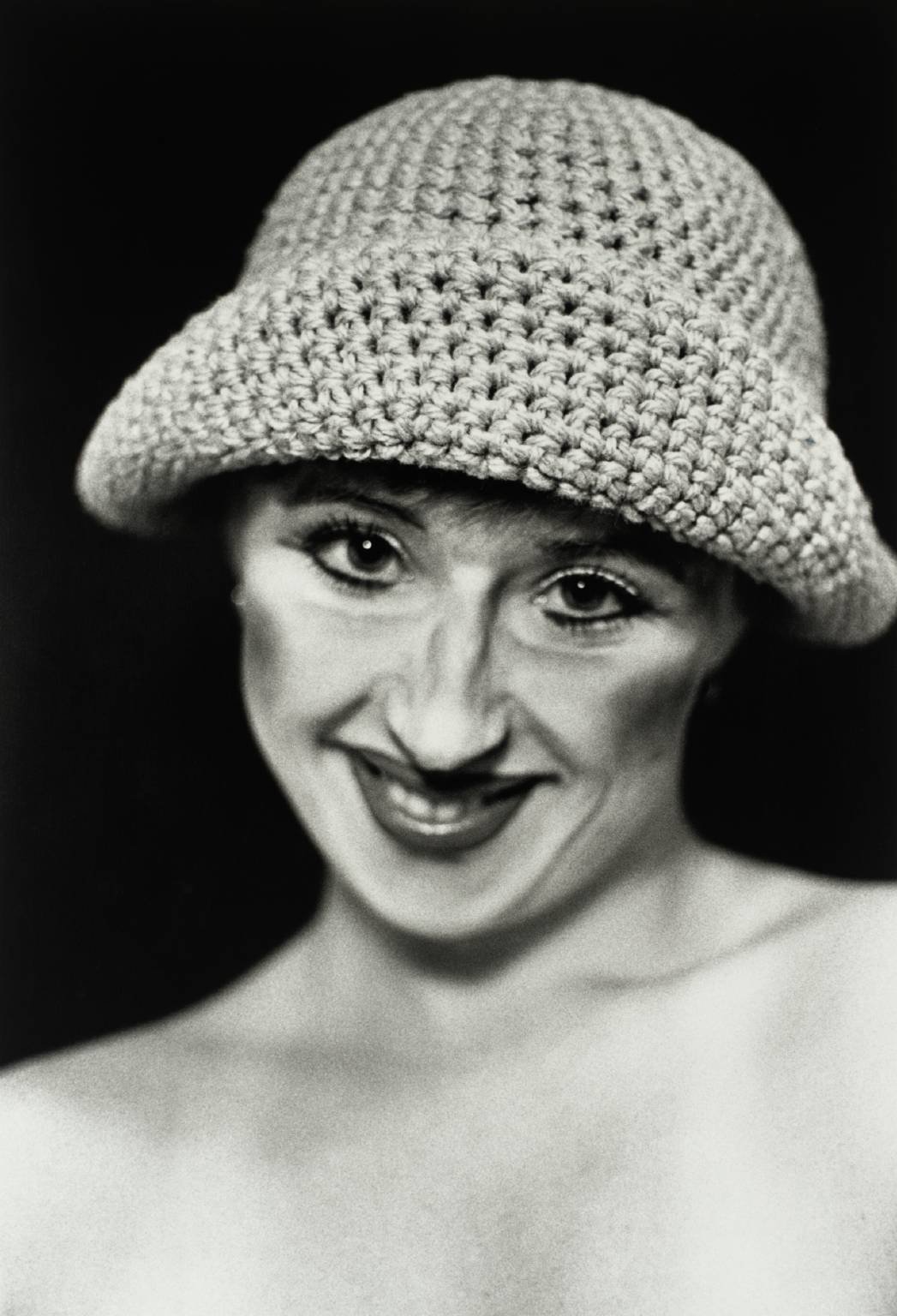Cindy Sherman 1954-
By Patrick Heath
Cindy Sherman, Untitled A, 1975, Photograph, gelatine silver print on paper, 414 × 283 mm, Tate, United Kingdon, © Cindy Sherman
Cynthia Morris Sherman (b. January 19, 1954) is an American photographer who has ascertained prominence through the subversion of the traditional self-portrait in a manner that deals with contentions such as sexual stereotypes and social role-playing. Sherman’s creative use of costume, make-up, and props have allowed her to create hundreds of disparate scenarios that hold up a piercing candle to pervasive identity tropes that were beginning to gain a foothold during the 1970s. Her persistent adherence to the self-portrait raises interesting questions about the specious nature of these tropes and the ability for the individual to flitter between the different characters that make up the kind of society perpetuated by advertising, cinema, and the media. Sherman has enjoyed incredible success in her career and is recognised as one of the most important artists of the counter-cultural Pictures Generation alongside the likes of Robert Lango, Louise Lawler, Barbara Kruger, and Sherrie Levine.
Sherman was born in 1954 in New Jersey, the youngest of five children. Her mother, Dorothy, was a teaching assistant and her father, Charles, an aircraft engineer. Sherman moved to Long Island, NY when she was very young and spent her youth growing up there. She later commented that her mother was very kind, to the point of over-indulgence, and that her father was an execrated and austere figure. Sherman’s closest sibling in age was nine years her senior, this instilled in her a strong sense of independence during her teenage years. It was this independence conjoined with a strong willingness to please that made the idea of dressing up and ambiguous identity so alluring to Sherman. In 1972, she enrolled at Buffalo State College, initially studying painting but quickly switching to photography- a medium that she understood to have a wider creative scope.
Sherman began her first series of photographs immediately upon graduating from college; her Untitled Film Stills (1977-80) is a collection of 69 black and white photographs evoking the generic roles of female characters that prevailed in the Hollywood-produced Film Noir of the 1950s and 60s. The indeterminate nature of the individual photographs is essential to the resounding success of the suite; she adroitly creates heroines that cannot be directly associated with those found in real films. Sherman processed a number of the photographs in warm chemicals, cracking the emulsion and creating a grainy patina. This grain is instrumental in making the images less discernible, creating an ostensible obscurity, mirroring the growing anonymity of Film Noir actresses as the genre went into decline.
The 1980s saw Sherman develop her style, taking advantage of both colour film and larger format prints; all the while pertaining to her unique augmentation of self-portraiture. Her Rear Screen Projections and Centrefolds (1980) see a slight departure from the depiction of women in the Stills. In this series, Sherman dons contemporary clothing and styles of makeup, her resulting expressions become more hopeful and self-assured. The backgrounds of her pictures become equivocal projections on a screen, rather than the naturalistic streets of the Stills, the effect is somewhat liberative, showing the characters move away from the confines of Hollywood stereotypes. Sherman produced one of her most recognisable and disturbing series during the 1990s; her Sex Pictures (1992) were produced in reaction to the degrading essence of pornographic culture. Sherman uses deformed prosthetics and mutilated props within claustrophobic spaces to demonstrate how ‘[she] is disgusted with how people get themselves to look beautiful’ and depose manifestly masculine visions of the female in the history of art’.
As the century changed, Sherman began to diversify her creative output. In 1997, she directed the film Office Killer, starring Jeanne Tripplehorn, Molly Ringwald and Carol Kane. Philipp Kaiser suggested at an exhibition in the Metro Pictures Gallery in 2016, that the film was a natural continuation of projects that Sherman had worked on during her time Buffalo State College. Sherman has also worked with Rei Kawakubo, producing images for the Post Card Series for Comme des Garçons for the brand's autumn/winter 1994–95 collections, in 2006 she worked on an advertising campaign for the designer Marc Jacobs, and in 2008 she created the six-image series Cindy Sherman: Untitled (Balenciaga). Sherman continues to take photographs, but she admits that both her health and length of her career make it increasingly difficult to produce genuinely new work. However, her newest important series from 2016, the Imitation of Life, shows her posing as ageing actress-like women in vintage costume and theatrical makeup. The series deals with the disparaging perception of women as they enter into later life, and indicates that Sherman has not lost her touch as a dexterous social commentator.
Bibliography-
Hattenstone, Simon, ‘Cindy Sherman: Me, myself and I’, The Guardian, (Sat 15 Jan 2011) https://www.theguardian.com/artanddesign/2011/jan/15/cindy-sherman-interview
Britannica, The Editors of Encyclopaedia. "Cindy Sherman". Encyclopedia Britannica, (15 Jan. 2022), https://www.britannica.com/biography/Cindy-Sherman
Genocchio, Benjamin. "ART REVIEW; Portraits of the Artist as an Actor", The New York Times, (April 4, 2004), https://www.nytimes.com/2004/04/04/nyregion/art-review-portraits-of-the-artist-as-an-actor.html

